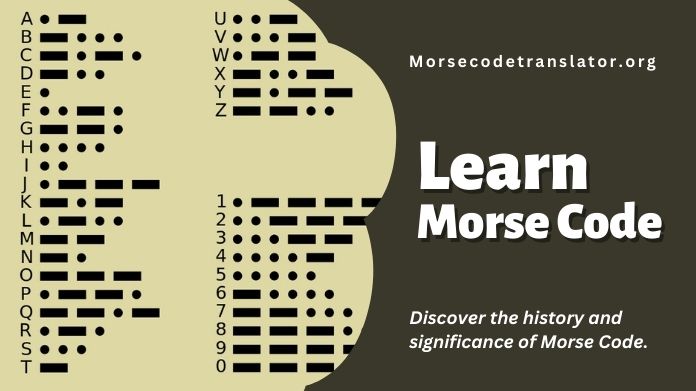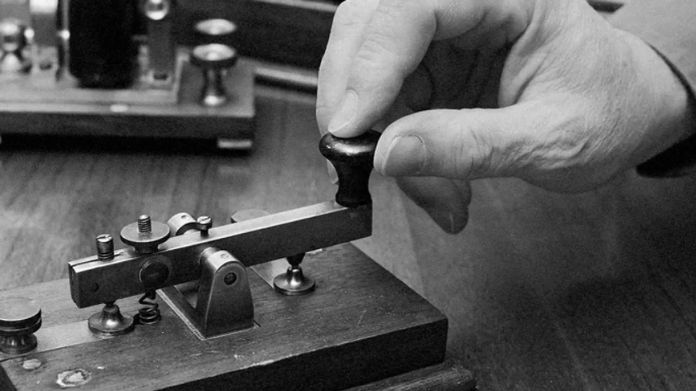In the tapestry of human communication, Morse Code stands as a revolutionary thread that wove its way through history, altering the landscape of how messages were conveyed across distances.
From its inception in the early 19th century by Samuel Morse and Alfred Vail, learn Morse Code emerged as a language of dots and dashes that transcended barriers, transforming how people communicate.
This Morse Code Translator exploration, “How Morse Code Change the Way People Communicate,” delves into the profound impact on learn Morse Code on human interaction.
As we embark on this journey through time, we’ll uncover the origins of the Morse Code, its crucial role in telegraphy, and its far-reaching consequences on various aspects of society, from commerce and diplomacy to emergency communication.
Join us in unraveling the intricate web of dots and dashes that connected distant places and shaped the narrative of communication evolution. Morse Code isn’t merely a relic of the past; it’s a testament to human ingenuity and adaptability, illustrating how a seemingly simple system transformed the world and left an indelible mark on how we connect.
Learn Morse Code: Understanding of Morse Code

Morse Code is a communication form that utilizes dots and dashes to represent letters, numbers, and other symbols. Samuel Morse and Alfred Vail developed it in the 1830s and 1840s to send messages over long distances using telegraph systems.
In Morse Code, each alphabet letter is represented by a combination of dots and dashes. For example, “A” is represented by a dot followed by a dash, while “B” is represented by a dash followed by three dots.
Numbers in Morse Code are represented by a series of five dots and dashes, with each number having its unique combination. For example, “1” is represented by a single dot, while “2” is represented by two dots followed by two dashes.
In addition to letters and numbers, Morse Code also includes a set of symbols, such as punctuation marks and special characters. These symbols are represented by their unique combinations of dots and dashes.
To learn Morse Code, practising listening to and decoding Morse Code transmissions is helpful. Many online resources provide Morse Code practice exercises and audio files to help you become familiar with the code.
Overall, learning Morse Code can be a fun and rewarding skill to acquire. It can be used for various purposes, such as emergency signaling, amateur radio communication, and even as a unique way to send secret messages to friends. So why give it a try and start learning Morse Code today?
How Morse Code Changed the Way People Communicate?

Morse Code, with its simple yet ingenious system of dots and dashes, profoundly changed how people communicate, leaving an enduring impact on human history.
Here are some key ways in which Morse Code transformed communication:
1. Rapid Long-Distance Communication
Before the advent of Morse Code, long-distance communication was a time-consuming and challenging endeavor. With the introduction of the telegraph system, Morse Code enabled rapid transmission of messages across vast distances—this revolutionized how information could be conveyed, enhancing personal and business communication.
2. Global Connectivity
Morse Code played a pivotal role in connecting distant parts of the world. Telegraph lines, often accompanied by undersea cables, facilitated near-instantaneous communication between continents. This global connectivity had far-reaching implications for diplomacy, trade, and news exchange.
3. Maritime Communication
Morse Code became the standard language for maritime communication. Ships at sea used signal lamps or radio transmissions to convey messages using Morse Code. This standardization contributed to safer navigation, efficient naval operations, and swift emergency response.
4. Military Significance
Morse Code played a crucial role in military communication during wars and conflicts. Its simplicity and ease of transmission made it a practical means of conveying strategic information securely. Soldiers and commanders relied on Morse Code for coded messages on the battlefield.
5. Search and Rescue
Morse Code’s effective communication through light signals or sound made it instrumental in search and rescue operations. Distress signals, such as SOS, became internationally recognized in emergencies.
6. Cultural Impact
Morse Code entered popular culture, influencing art, literature, and fashion. Coded messages in Morse became a symbol of secrecy and mystery, adding a layer of intrigue to various forms of entertainment.
7. Educational and Amateur Radio
Morse Code became a fundamental skill for radio operators, especially in amateur radio. Even today, enthusiasts and hobbyists learn Morse Code as part of radio communication, preserving this historical mode of interaction.
While contemporary communication technologies have largely superseded Morse Code in practical applications, its legacy endures. The impact of Morse Code on shaping the way people communicate is a testament to its inventors’ ingenuity and historical significance in connecting the world.
Conclusion
So, that’s the story of Morse Code—how a bunch of dots and dashes changed how people talk. Morse Code was like the superhero of communication back in the day, from speedy long-distance messages to guiding ships at sea.
While we don’t use it much in our everyday chats now, learning Morse Code is like unlocking a secret code to the past. It’s an incredible journey into how people used to connect before smartphones and the internet.
So, as we wrap up our Morse Code adventure, let those dots and dashes remind us of a time when messages crossed continents in blinks and beeps.
Happy decoding!
